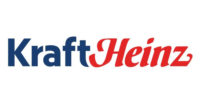Kraft talks supply chain sustainability
Everyone hates traffic. It eats up time, wastes energy and emits harmful carbon dioxide. As population and urbanization increase, experts say traffic is only getting worse. Kraft Foods, Northfield, Ill., says it is addressing this challenge by finding alternatives to trucking and making its distribution network more efficient.
Since 2005, Kraft says innovative sustainability projects have saved the company more than 50 million miles (80 million km) in its global transportation and distribution network.
"We think about miles, piles and idles when moving our product," said Steve Yucknut, vice president, Sustainability. "We're finding ways to drive fewer miles, reduce inventory piles and eliminate idling trucks. We're collaborating with customers and suppliers. And we're using a number of high-tech innovations for our trucks and warehouses to reduce energy and CO2 emissions."
Following are examples from Kraft Foods operations around the globe:
Riding the waves (and rails) to environmental efficiency
* In North America, Kraft Foods saved more than a million miles (1.6 million km), replaced 10,000 truck shipments and reduced 2,000 tons of CO2 emissions by shipping wheat via waterways to its Toledo, Ohio, flour mill. Now, ships make bigger deliveries less frequently.
* In Brazil, employees saved nearly 250,000 miles (390,000 km) and reduced 300 tons of CO2 emissions by using boats to send products to distribution centers. In just six months, the change saved more than 125 truck shipments.
* In Germany, Kraft Foods transports coffee beans from Bremen to its Berlin roasting plant, saving about 1.8 million miles (2.8 million km) and eliminating 2,300 tons of CO2 emissions. And the project took 7,000 trucks off the road.
* In Austria, Kraft Foods saved more than 150,000 miles (nearly 250,000 km) by sending products in refrigerated containers on railcars, eliminating 400 truck shipments and reducing 250 tons of CO2 emissions.
* In the United Kingdom, the company now sends products to one of its key customers by train instead of truck, saving more than 40,000 miles (nearly 70,000 km) and eliminating 120 truck shipments.
Fewer, faster and more fuel-efficient deliveries
* In Europe, Kraft Foods is modernizing its transportation network by establishing a single hub in Bratislava, Slovakia to make 20 percent fewer trips between its European plants and distribution centers. And in the Philippines, the company now uses a national distribution center so customers receive shipments 20 percent faster than before, saving miles and fuel.
* In North America, Kraft Foods has purchased 11 hybrid direct store delivery vehicles for frozen products. The hybrid power train and electric refrigeration technology use up to 30 percent less fuel than a traditional truck. And in Mexico, the company has pioneered a double-decker transport system that allows trucks to safely carry up to 56 pallets in one load - twice as many as before.
Deploying smarter technology
* Kraft Foods says it has been working with the U.S. Environmental Protection Agency to benefit from the latest technology and share best practices. Earlier this month, the EPA awarded Kraft Foods for its environmental excellence, innovation and creativity. As part of its participation in the EPA's SmartWay Transport Partnership (www.epa.gov/smartway), the company has adopted no-idle engine policies at its shipping locations, piloted a hybrid frozen delivery truck program and increased its use of intermodal (rail and barge) transport.
* Using Oracle®* Transportation Management to create Project MOST (Management of Optimized Sustainable Transportation), Kraft Foods measures truck movements and designs new trip segments to minimize "empty miles," eliminating more than 500,000 miles (800,000 km) last year. Now, Kraft Foods' private fleet and its top 50 carriers use the software and Oracle has recognized the company for its work with its 2009 "Enable the Eco-Enterprise" award. *Oracle is a registered trademark of Oracle Corporation and/or its affiliates.
* Kraft Foods' 20 largest plants and distribution centers in North America use software from Transportation/Warehouse Optimization to maximize product per truckload, taking the equivalent of 1,500 trucks off the road and more than a million miles (1.6 million km) off the highway system.
Since 2005, Kraft says innovative sustainability projects have saved the company more than 50 million miles (80 million km) in its global transportation and distribution network.
"We think about miles, piles and idles when moving our product," said Steve Yucknut, vice president, Sustainability. "We're finding ways to drive fewer miles, reduce inventory piles and eliminate idling trucks. We're collaborating with customers and suppliers. And we're using a number of high-tech innovations for our trucks and warehouses to reduce energy and CO2 emissions."
Following are examples from Kraft Foods operations around the globe:
Riding the waves (and rails) to environmental efficiency
* In North America, Kraft Foods saved more than a million miles (1.6 million km), replaced 10,000 truck shipments and reduced 2,000 tons of CO2 emissions by shipping wheat via waterways to its Toledo, Ohio, flour mill. Now, ships make bigger deliveries less frequently.
* In Brazil, employees saved nearly 250,000 miles (390,000 km) and reduced 300 tons of CO2 emissions by using boats to send products to distribution centers. In just six months, the change saved more than 125 truck shipments.
* In Germany, Kraft Foods transports coffee beans from Bremen to its Berlin roasting plant, saving about 1.8 million miles (2.8 million km) and eliminating 2,300 tons of CO2 emissions. And the project took 7,000 trucks off the road.
* In Austria, Kraft Foods saved more than 150,000 miles (nearly 250,000 km) by sending products in refrigerated containers on railcars, eliminating 400 truck shipments and reducing 250 tons of CO2 emissions.
* In the United Kingdom, the company now sends products to one of its key customers by train instead of truck, saving more than 40,000 miles (nearly 70,000 km) and eliminating 120 truck shipments.
Fewer, faster and more fuel-efficient deliveries
* In Europe, Kraft Foods is modernizing its transportation network by establishing a single hub in Bratislava, Slovakia to make 20 percent fewer trips between its European plants and distribution centers. And in the Philippines, the company now uses a national distribution center so customers receive shipments 20 percent faster than before, saving miles and fuel.
* In North America, Kraft Foods has purchased 11 hybrid direct store delivery vehicles for frozen products. The hybrid power train and electric refrigeration technology use up to 30 percent less fuel than a traditional truck. And in Mexico, the company has pioneered a double-decker transport system that allows trucks to safely carry up to 56 pallets in one load - twice as many as before.
Deploying smarter technology
* Kraft Foods says it has been working with the U.S. Environmental Protection Agency to benefit from the latest technology and share best practices. Earlier this month, the EPA awarded Kraft Foods for its environmental excellence, innovation and creativity. As part of its participation in the EPA's SmartWay Transport Partnership (www.epa.gov/smartway), the company has adopted no-idle engine policies at its shipping locations, piloted a hybrid frozen delivery truck program and increased its use of intermodal (rail and barge) transport.
* Using Oracle®* Transportation Management to create Project MOST (Management of Optimized Sustainable Transportation), Kraft Foods measures truck movements and designs new trip segments to minimize "empty miles," eliminating more than 500,000 miles (800,000 km) last year. Now, Kraft Foods' private fleet and its top 50 carriers use the software and Oracle has recognized the company for its work with its 2009 "Enable the Eco-Enterprise" award. *Oracle is a registered trademark of Oracle Corporation and/or its affiliates.
* Kraft Foods' 20 largest plants and distribution centers in North America use software from Transportation/Warehouse Optimization to maximize product per truckload, taking the equivalent of 1,500 trucks off the road and more than a million miles (1.6 million km) off the highway system.
Looking for a reprint of this article?
From high-res PDFs to custom plaques, order your copy today!









